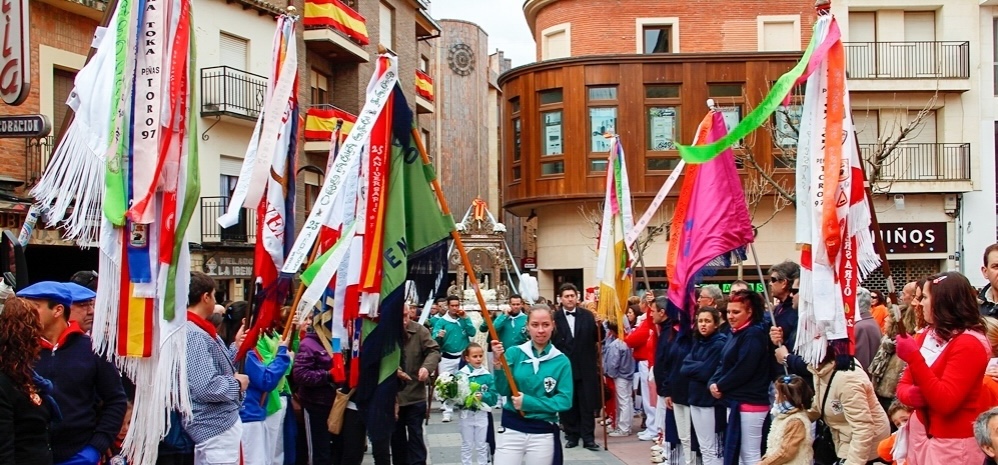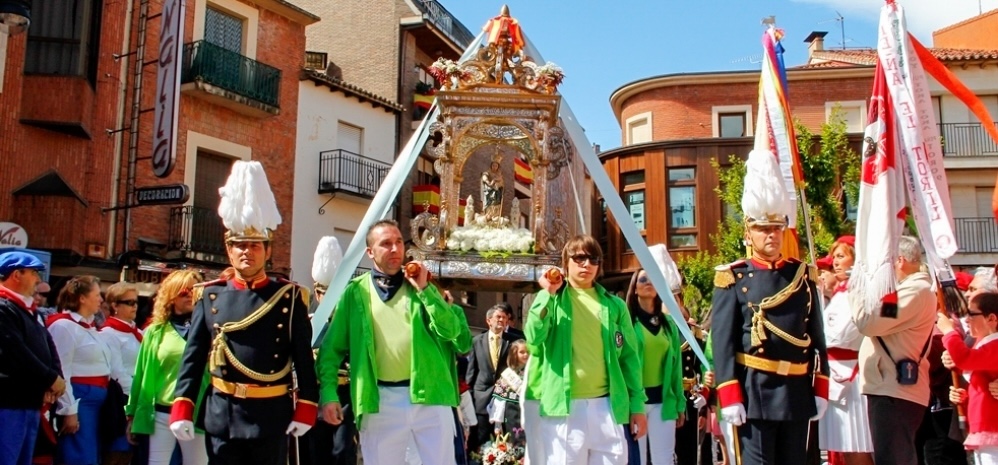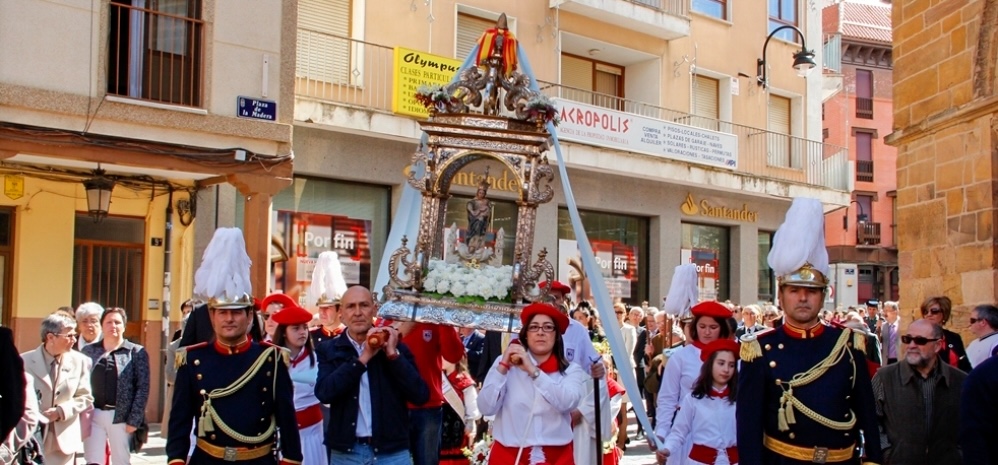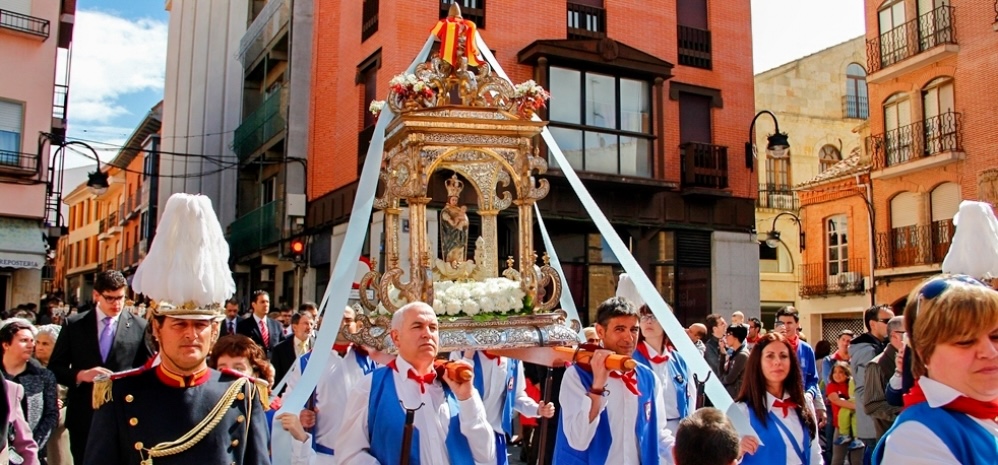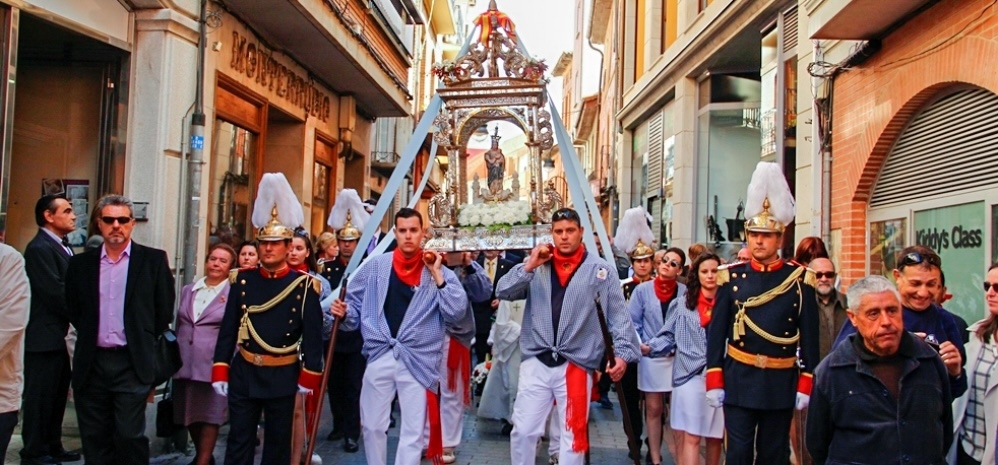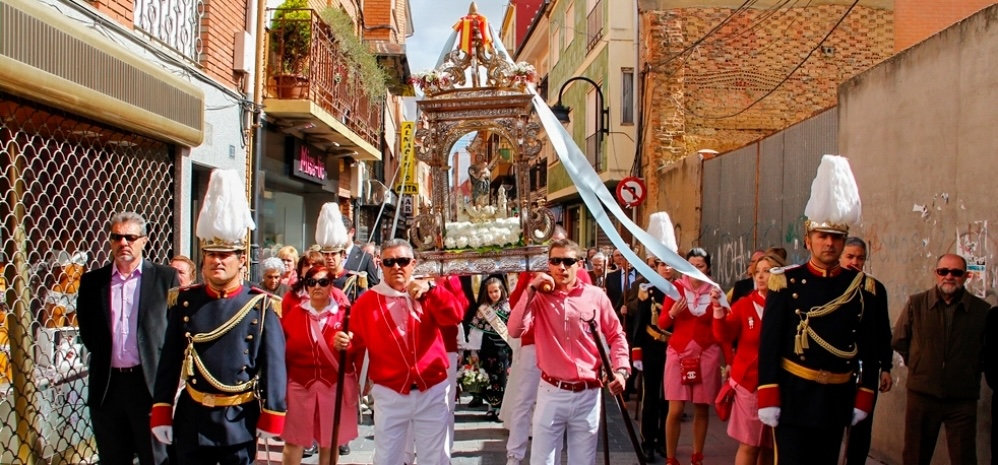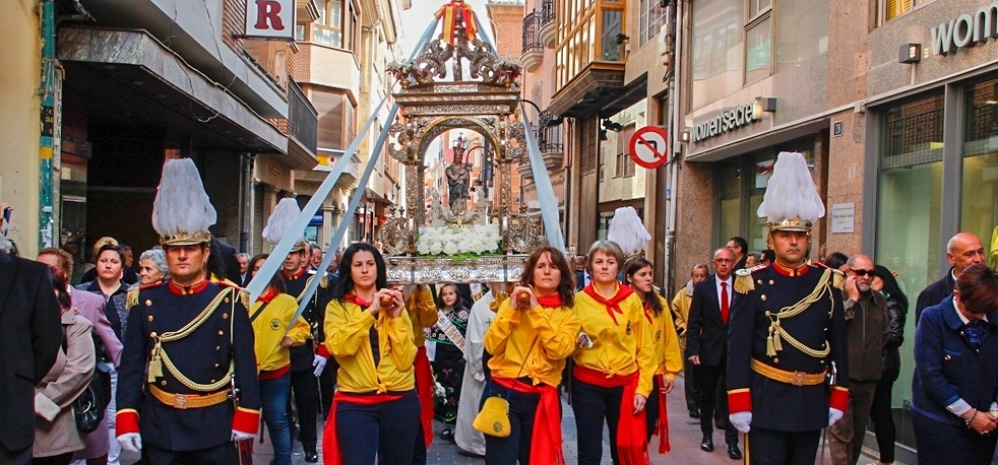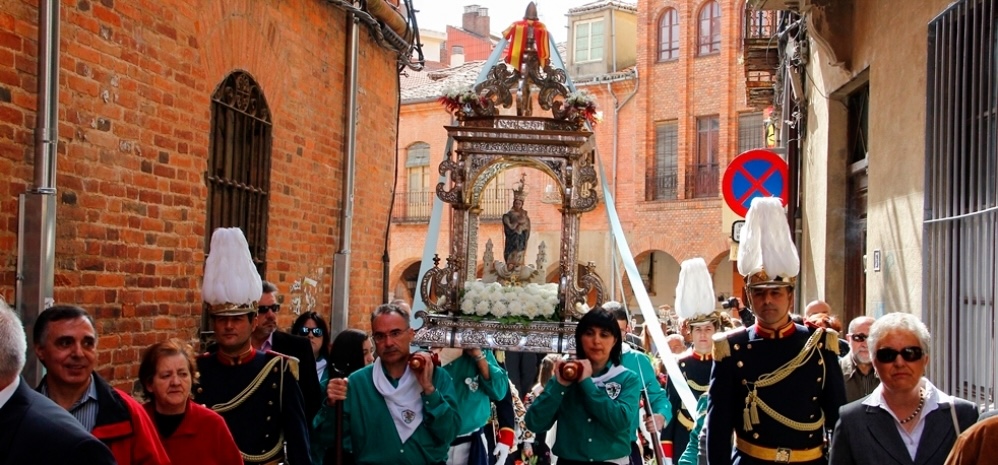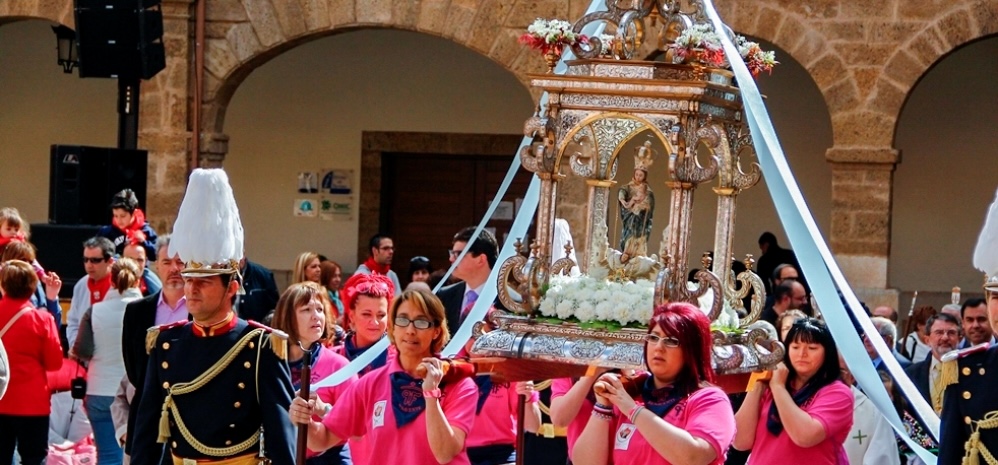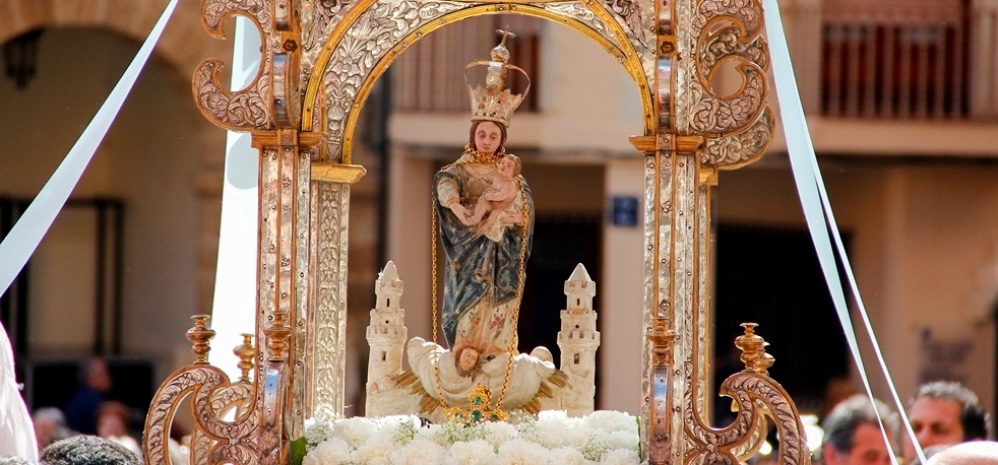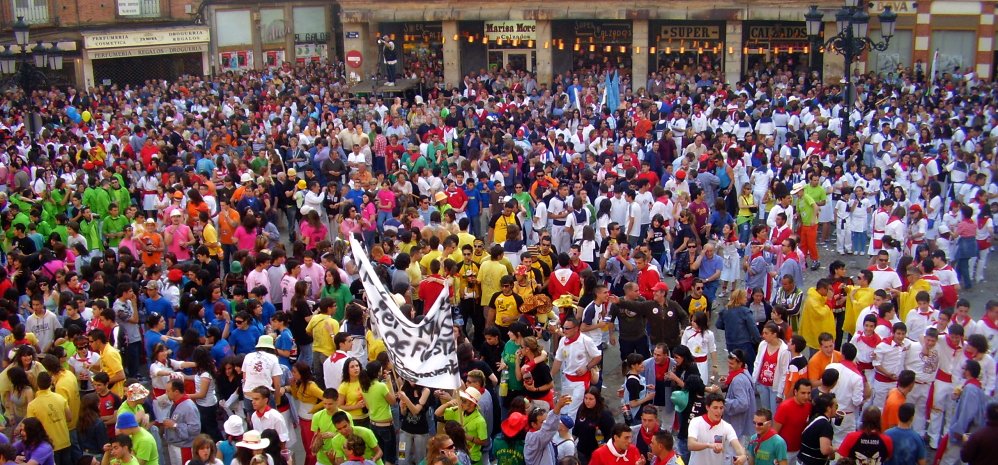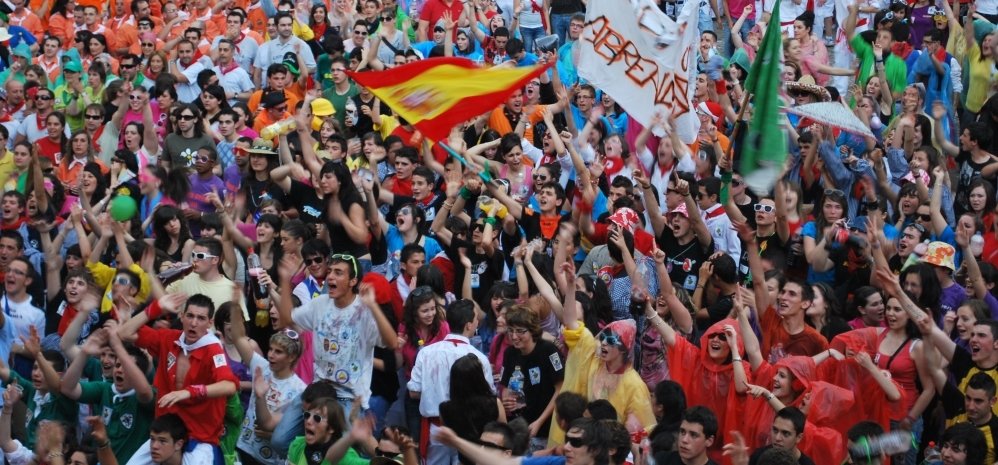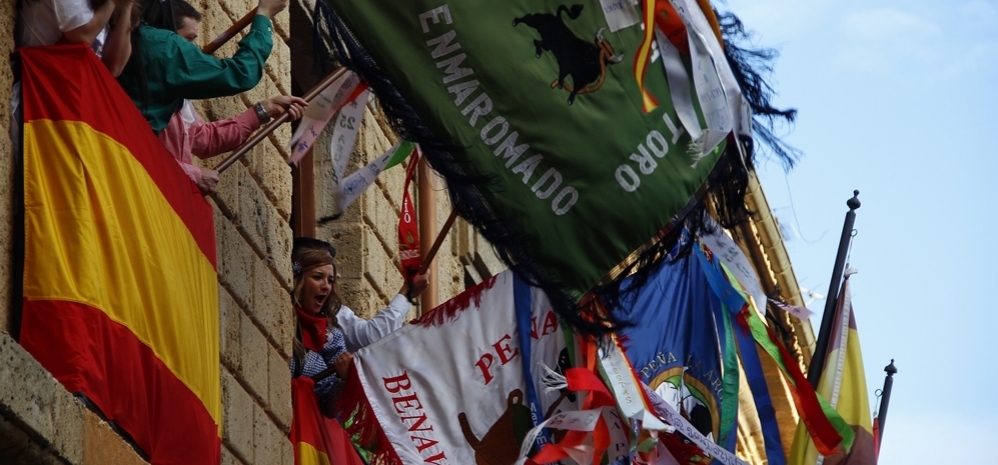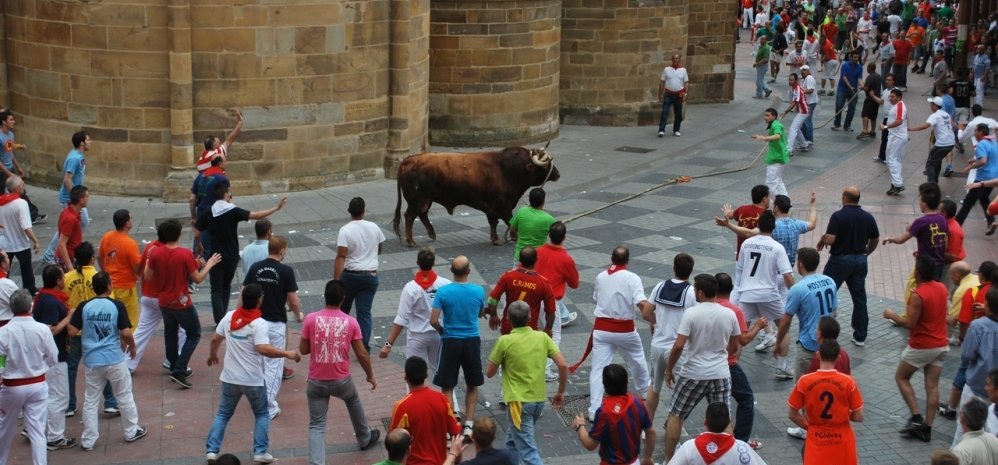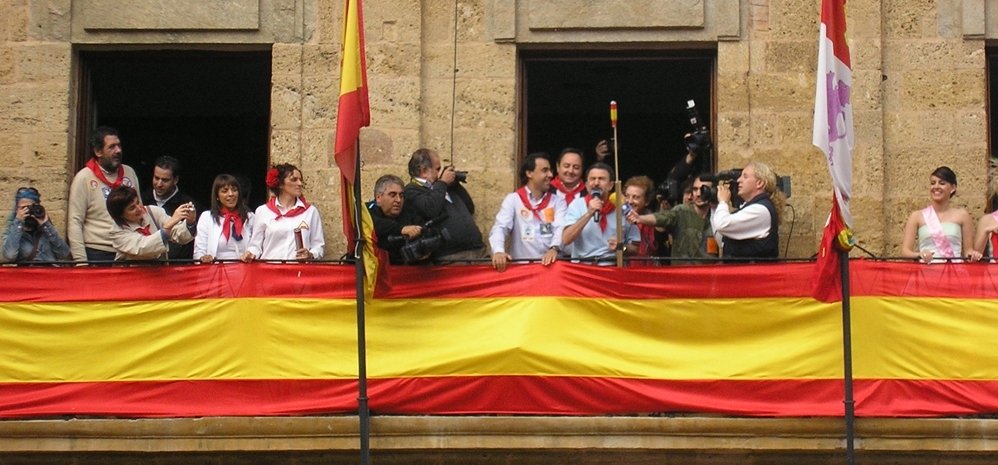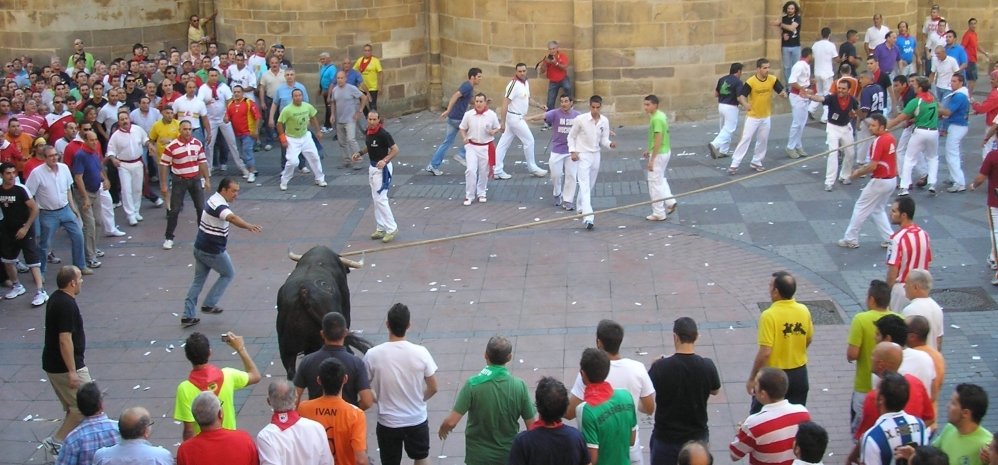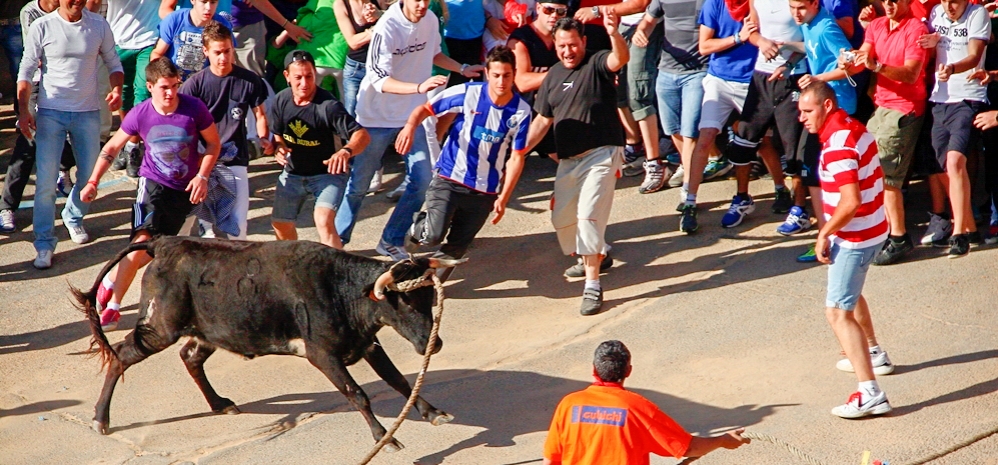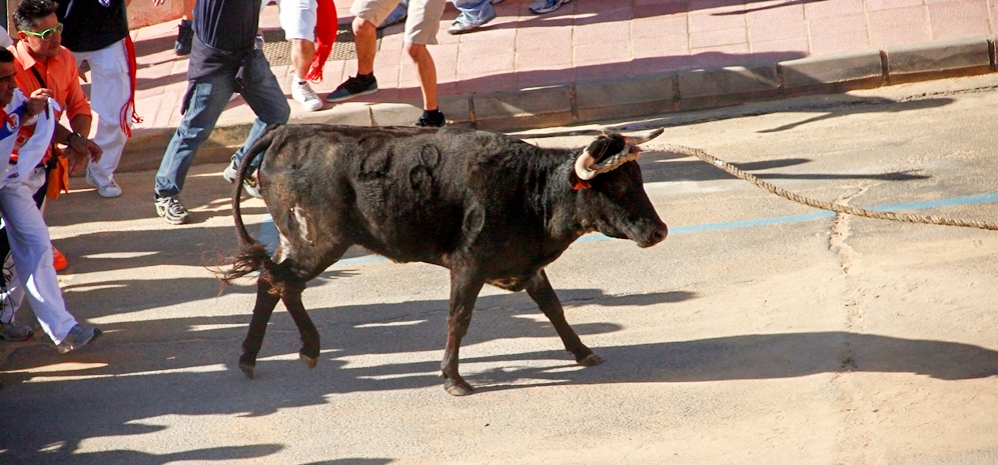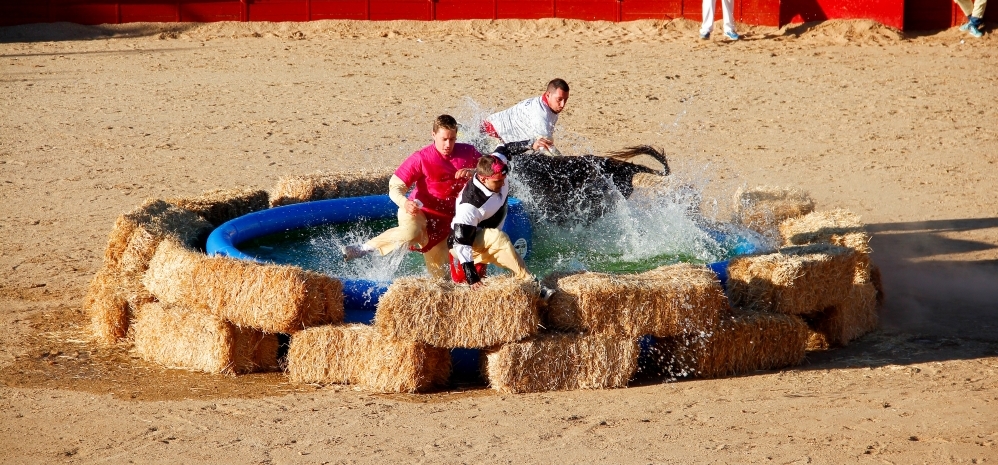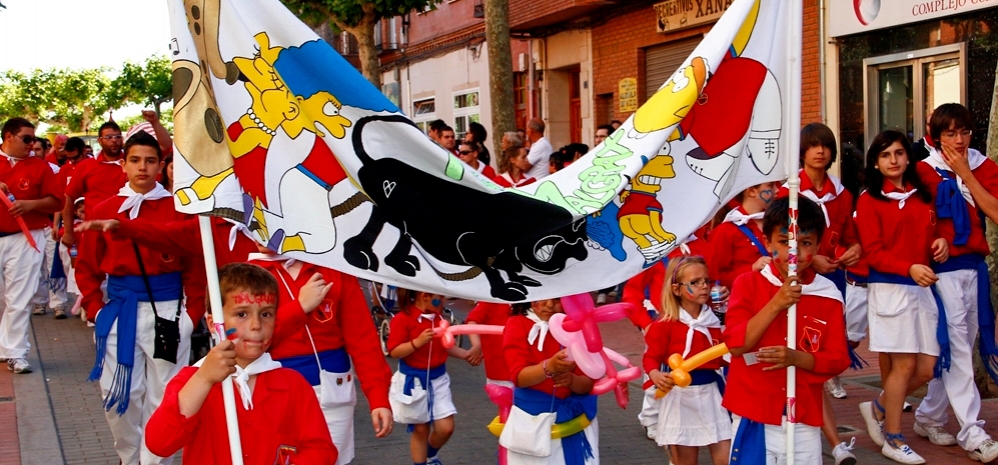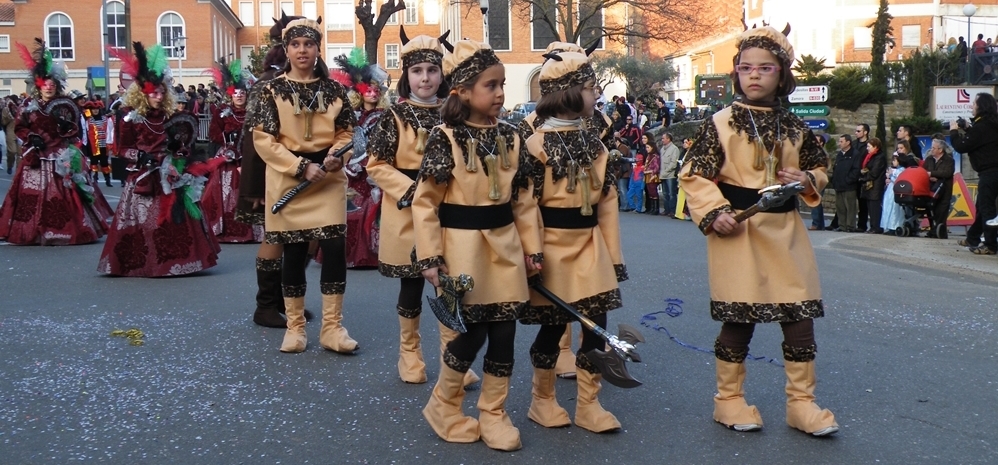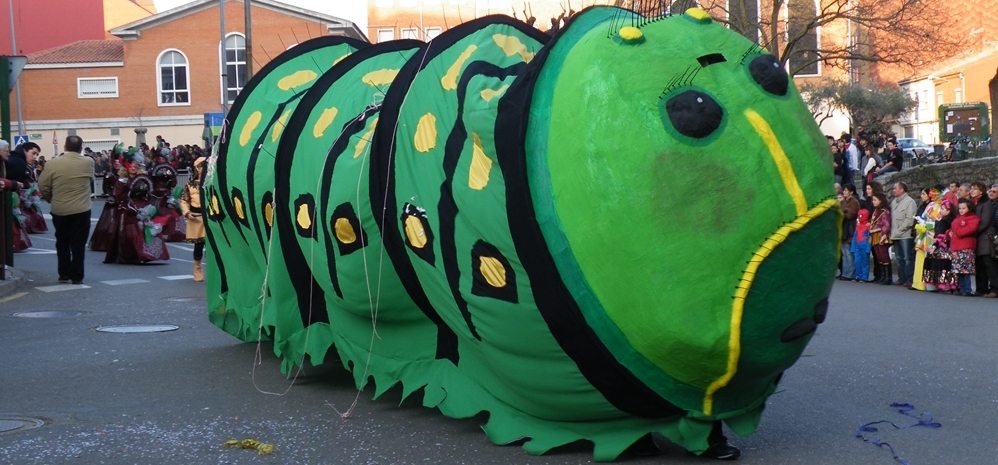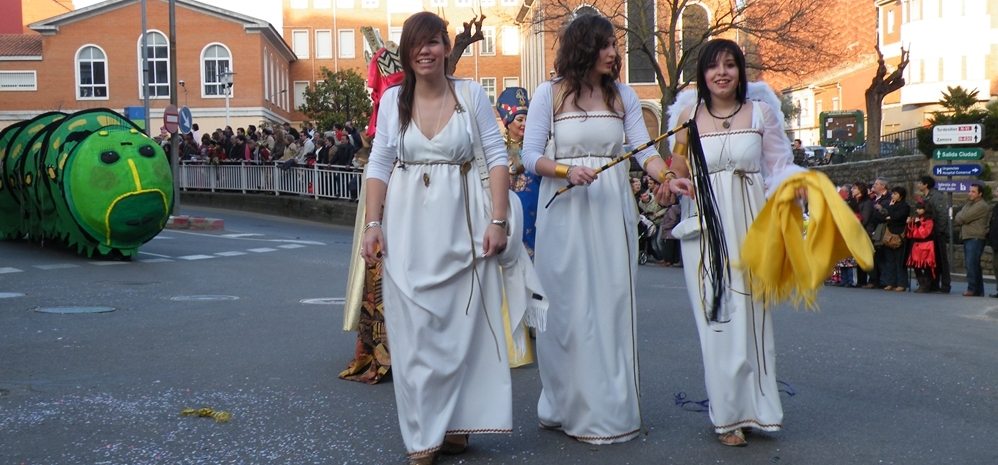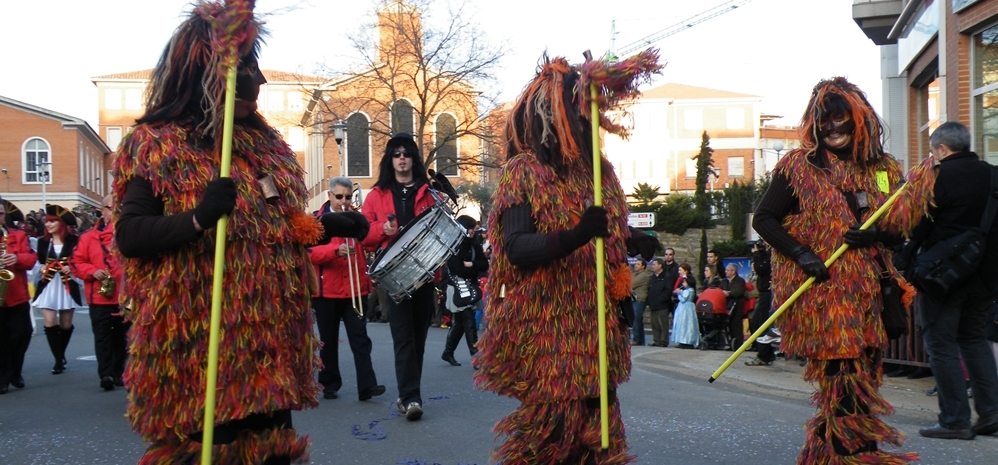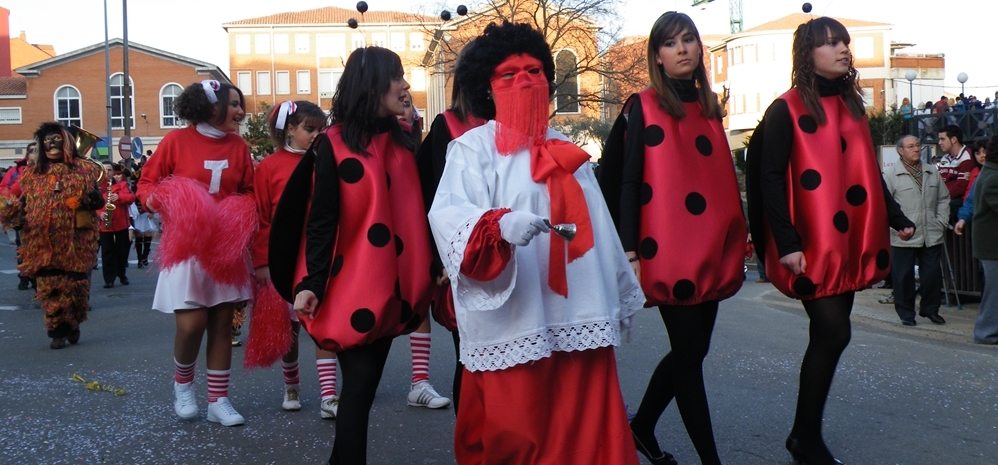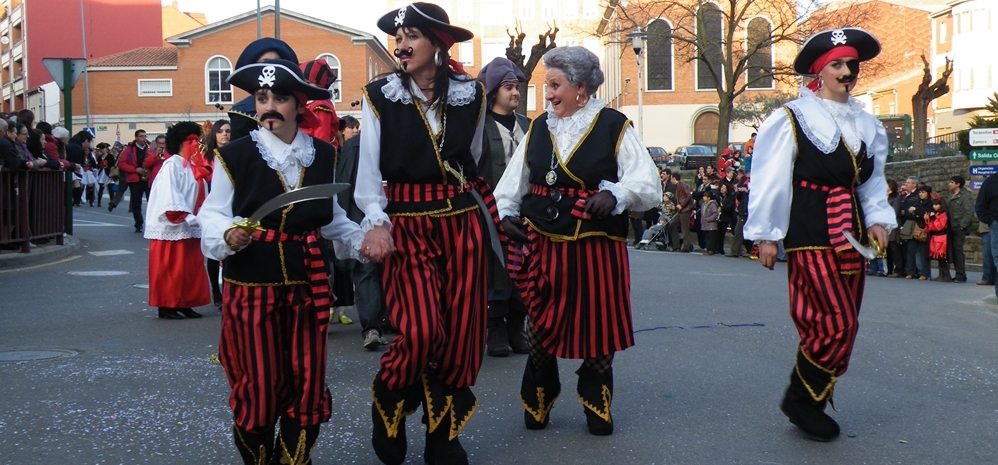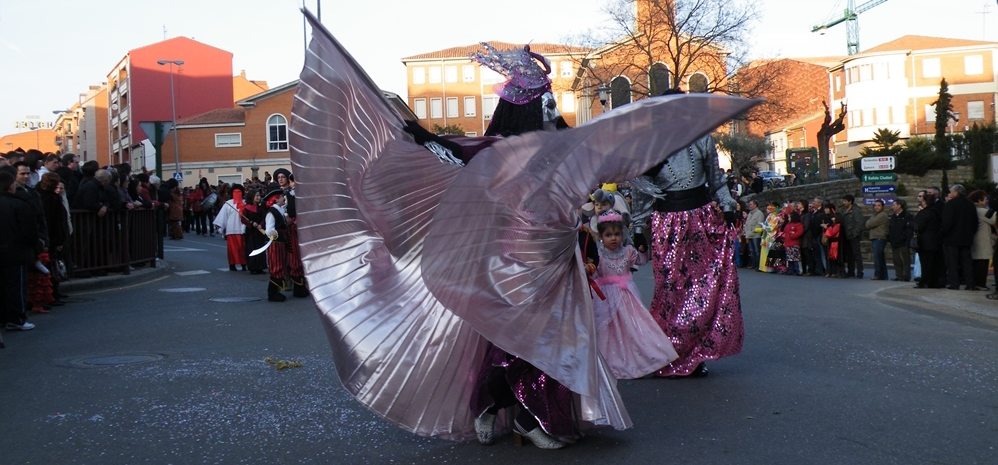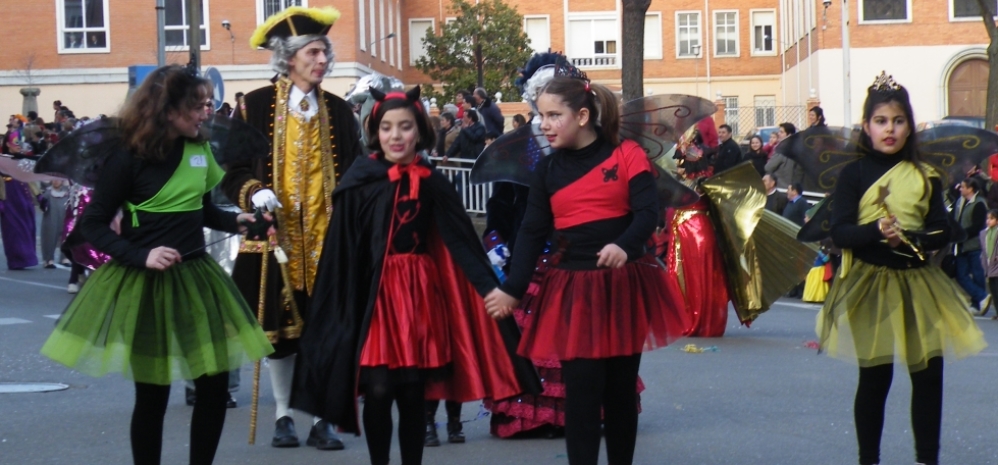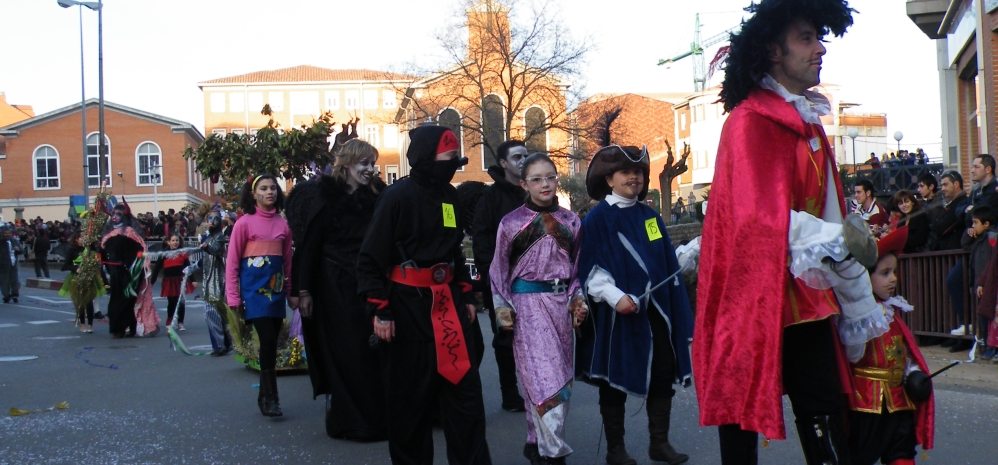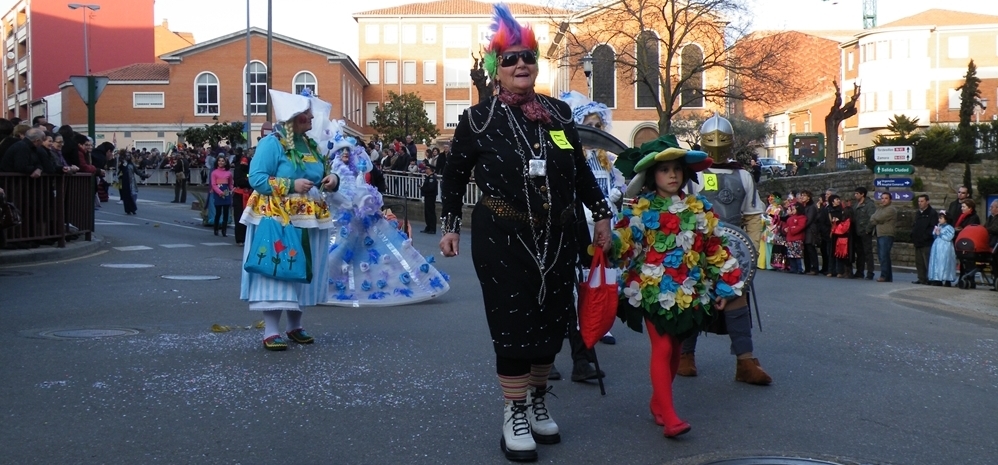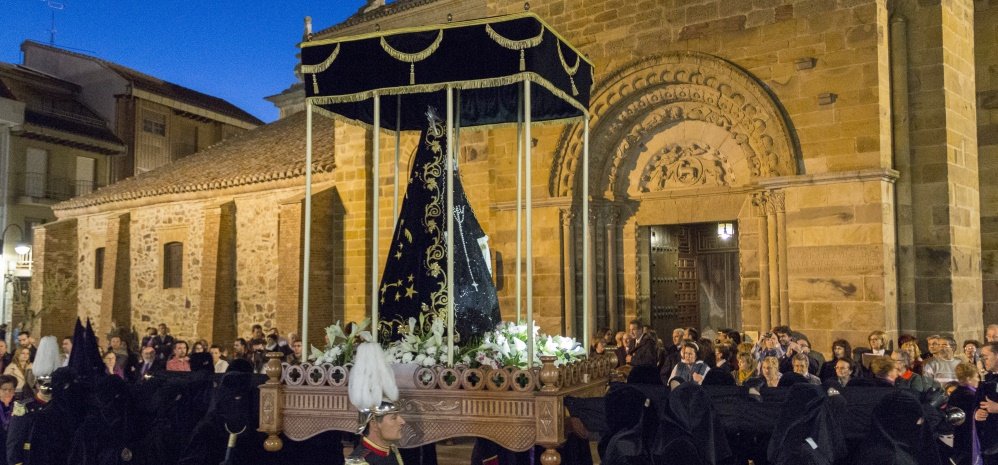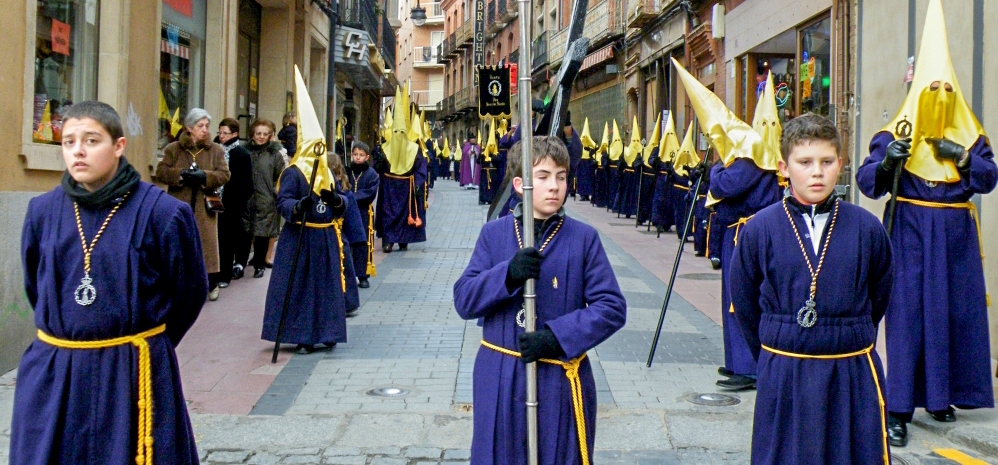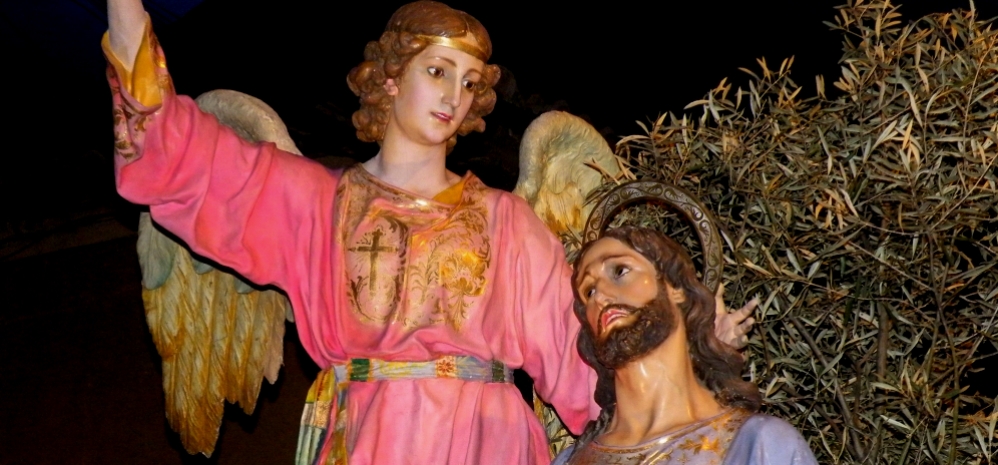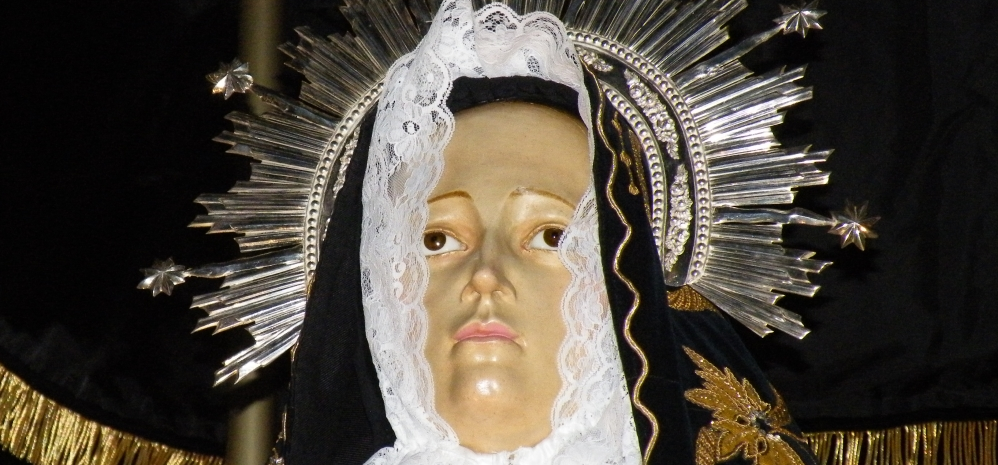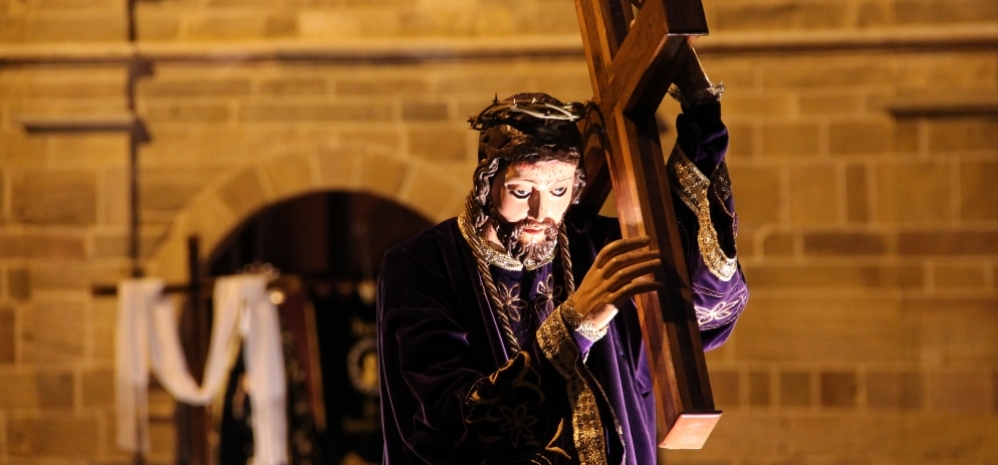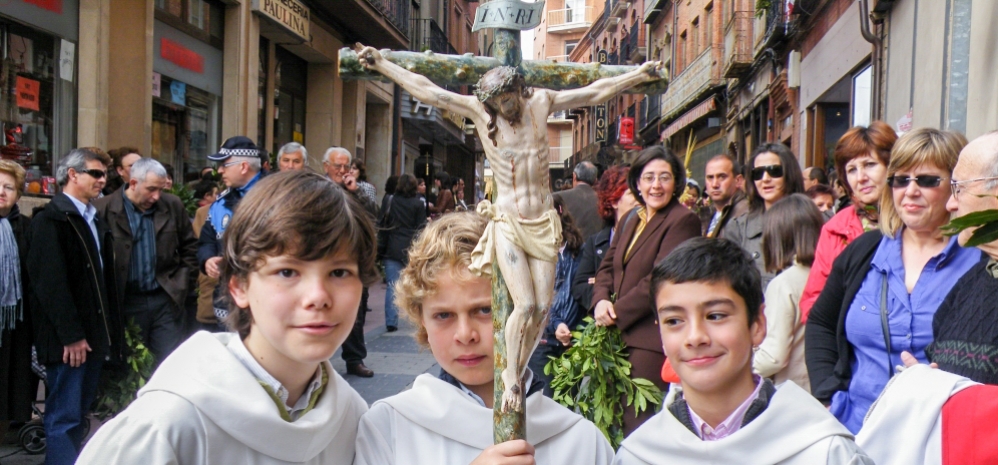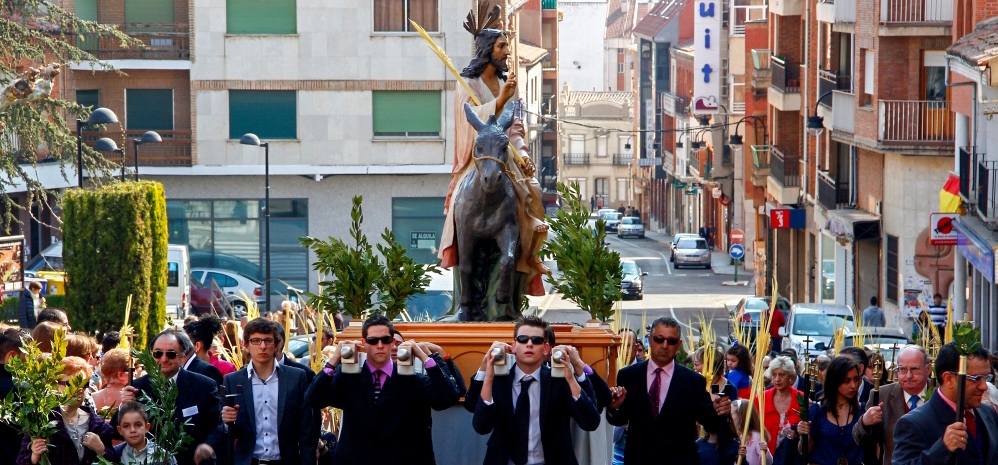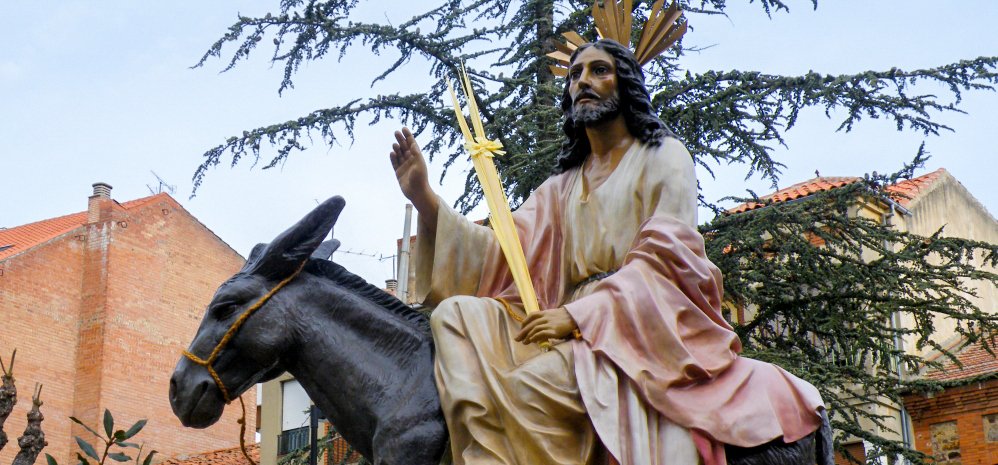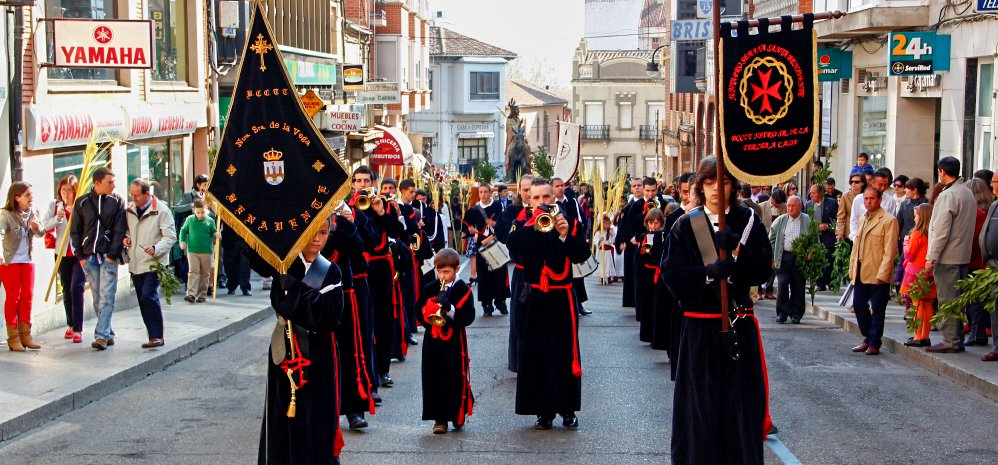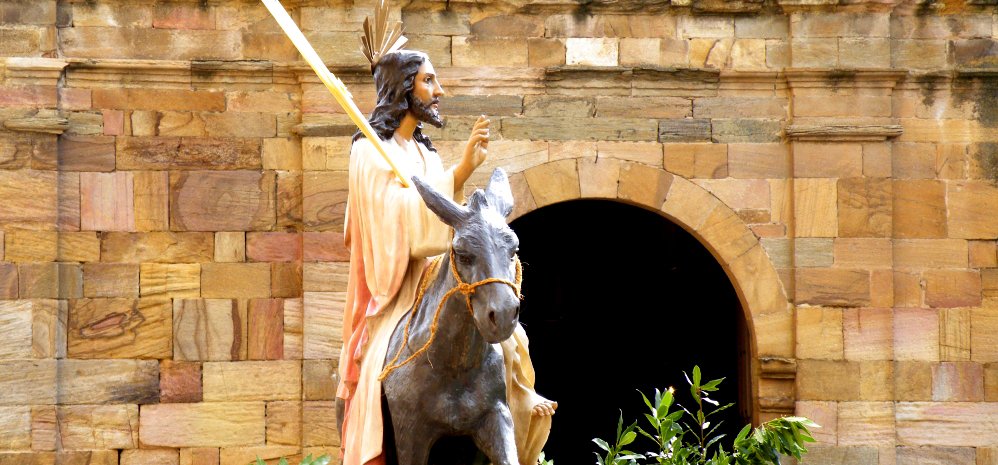Feasts of the Veguilla
Declared of Regional Tourist Interest
The Patron Saint Festivities in honor of the Virgen de la Vega are celebrated around Easter Monday, eight days after Easter Sunday. It is traditional during them the “Petición del Toro Enmaromado” that will run through the streets fifty-one days later. These festivities have been declared of Regional Tourist Interest.
Events and components of the festival
On Easter Monday takes place during the morning the Procession of the Veguilla, during which the Patron Saint walks through some of the central streets of the city carried by the representations of the Peñas benaventanas. In the early afternoon takes place the traditional: Petición del Toro Enmaromado, the act in which a crowd gathers in the Plaza Mayor of the city and surrounding streets. All shouting in unison “bull, bull, bull”, ask the authorities to grant the bull, so that the festival that will take place on Wednesday of the week of Corpus Christi (51 days after the Veguilla), can be held one more year as traditional custom. Another tradition around this feast is the delivery and distribution of the so-called “Pan de la Veguilla”.
During these dates take place several musical and folkloric performances as well as a colorful concentration of Giants and Big-heads, who come from different localities to start the festivities.
Festivities of the "Toro Enmaromado".
Declared of Regional Tourist Interest
The festivities of the “Toro Enmaromado” of Benavente have been declared of Regional Tourist Interest since 1991. They usually last a week, although the “big day” of the festivities is the Wednesday before the feast of Corpus Christi. On this day, the young men run holding on to a long rope attached to the horns of the bull. The “peñas”, the “charangas” and the “verbenas” contribute to create a great spectacle of music and color.
The race of the “toro enmaromado” takes place along a fixed itinerary that runs through various streets of Benavente. On Wednesday afternoon, the bull makes its spectacular run from the bullpen, preceded by the roar of three rockets or bombs that previously announce the event, thus warning the public that fills the streets and crowds the balconies along the route. Previously in the “mueco” where it is located, it is placed a long rope hooked to its horns. The departure of the morlaco is spectacular and is one of the most exciting and colorful moments of the race. Hundreds of young men, caught on the rope, lead the bull to the slaughterhouse where it is slaughtered at the end of its journey. The Toro Enmaromado de Benavente is also recognized as a Traditional Bullfighting Festival.
During these days a wide variety of shows complete the festive program: urban bull runs, popular festivals, fireworks festivals, parades and parades, etc.. The bulls are accompanied by a caravan of bulls to the city, and the bulls are taken to the bull ranch. During the bullfight, a country festival takes place.
The so-called “Toritos del Alba” are another of the festive components that contribute to the projection and future of the festivities.
Carnival Festivities
The Carnivals of Benavente in the past
The Carnivals had formerly in Benavente its prolegomena in the festivities of San Sebastian during which ran through the streets “The First Mask”, forming a peculiar procession that was initiated by a horseman on horseback with military bearing. The Carnival itself served as a contrast and anticipation to the ascent or rigors of Lent. In the 19th century, several halls were set up to celebrate Carnival, where lively dances were organized during these dates, such as the so-called “Domingo Gordo” (Fat Sunday), “Martes de Carnaval” (Shrove Tuesday) and “Domingo de Piñata” (Piñata Sunday). The existing orchestras in the city animated these parties. At the end of the 19th century, salons and casinos such as the “Salón Liceo”, the “Casino de la Rúa” and the “Casino del Conde” organized lively dances with comparsas and jocular carnival versifications.
Carnival festivities today
They are dates of joy and good humor, which constitute in Benavente an exponent of popular fun. During these days, colorful and lively parades go through the streets of the city. The costumes, the masks, the charangas and floats contribute to the enhancement of these festive manifestations. The festivities are complemented with dances in various halls of the city.
On the Saturday preceding Shrove Tuesday there is a big parade, at the end of which there is a prize-giving ceremony for the best costumes. Sunday is dedicated to children and a children’s Carnival parade is held, ending with a big dance.
Easter
Holy Week, as in many other places in Castilla y León, is characterized by its sobriety and is deeply rooted in the feelings of the people of Benavente.
The three oldest brotherhoods that procession in the city are the Vera Cruz, Jesus Nazareno and the Santo Entierro. In 1943 the Brotherhood of Silence was created and in 1999 the Ladies of Light and Solitude joined the processions as a section of one of its brotherhoods. Subsequently, a group of children members was also formed to accompany the images of the processions of Palm Sunday and Easter Sunday.
At the present time Benavente counts on a few processions of tradition, that shows us the diverse moments and avatars by which the locality and its Easter has crossed, but also fruit of its own characteristics and peculiarities like human community and that conform its personality.
Its imagery is a compendium of the different historical stages and aesthetic tastes through which it has passed throughout its history. Thus, we can observe remnants of medieval flavor (Ecce Homo) and ruralizing (Cristo de los Aflijidos), along with others loaded with baroque efectism (Paso de la Desnudezo Rodopelo, popularly known as “El judío del clavo”). Signs of the end of the century nineteenth-century Holy Week can also be found in its processional imagery, with richly dressed images, with Andalusian style canopies, in an aesthetic very much to the taste of the fin-de-siecle bourgeoisie, promoter and sponsor of the religious manifestations of that time (Nuestra Señora de las Angustias, La Soledad, etc.).
All in all, the most important sculptural patrimony of the Holy Week in Benavente is the one contributed during the twenties of the last century, in which an authentic renovation of the processional phenomenon takes place and numerous steps and images come to enrich the iconographic repertoire. In this sense, several works of the famous Valencian sculptor Pío Mollar, such as El Yacente, La Oración del Huerto, etc., represent a decisive contribution to the imagery of the processions. These works are characterized by their Levantine color and luminosity.
Finally, in the fifties, several contributions from the school of Olot and Christian Art, works of workshop, but very significant, come to swell the heritage cofradiero of the local Holy Week, are the group of the Crucifixion, also called the Fourth Word, The Veronica, Jesus in the Borriquilla, etc.. A singular contribution and of great personality is the Flagelado or Christ tied to a column, work of the sculptor José Alonso Coomonte from Benavente. To these works would be added others such as the group San Juan and the Virgin on the way to the Sepulchre, by the sculptor Ricardo Flecha.
